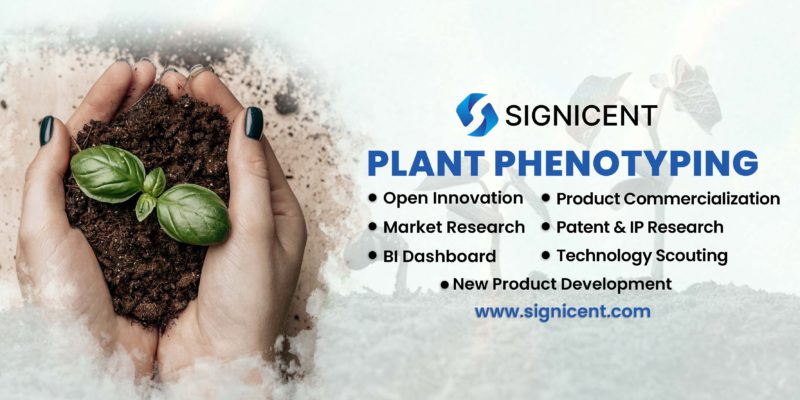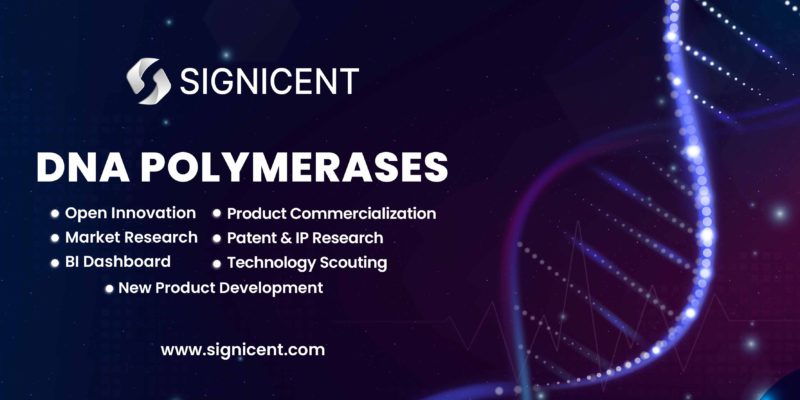The objective of the plant phenotyping report is to explore the domain of plant phenotyping. The report will include technology research, market research, and competitive aspect.
The plant phenotyping report will involve a comprehensive analysis of technologies that will include:
- Details of innovations surrounding the emerging technologies.
- Information on academic institutes working in the advancement of technology.
- Various competitors’ key players and associated technologies.
- Market analysis & segmentation for plant phenotyping global market.
- Forecasting the upcoming advancements in the respective areas.
- Digital Plant Phenotyping.
Plant phenotyping measures complex traits related to growth, yield, and adaptation to stress, with improved accuracy and precision at different scales of organization, from organs to canopies.
Rapid developments are taking place in the field of non-destructive, image-analysis-based phenotyping that allows for a characterization of plant traits in high-throughput.
Why Plant Phenotyping
Plant phenotyping offers many advantages and some of them are discussed below:
- Plant breeding: Massive amounts of genetic material are needed to produce a single new variety which could be achieved by digital plant phenotyping.
- Weed identification: Weeds are a growing problem for farmers, due to rising herbicide resistance and the difficulty in identifying them at an early stage in the huge expanse of a field.
- Pest and disease identification: Advanced imaging techniques such as chlorophyll fluorescence or near-infra-red (NIR), can detect early signs of infection much more effectively than the naked eye.
- Plant stress: Plants are prone to environmental stress. This can include lack of water or nutrients, too much sun, high soil salinity, or weather-related damage, Simple techniques, such as thermal infrared imagery, and stereo camera systems can help in prior detection of plant stress.
Aerial Multispectral Imaging System
Aerial multispectral imaging is used to estimate plant height and yield for the cotton crop, canopy cover, flower detection, etc. University of Georgia, USA has worked on the technology of aerial multispectral imaging systems. They observed that high throughput phenotyping faces challenges in design and data processing due to changing environmental conditions. This results in the manipulation of accurate results and records. However, ground vehicle systems represent correct data but it has several disadvantages such as low speed, wheel damage, soil compaction, and difficulty to adjust for a wide range of crops.
Unmanned Aerial Systems
Unmanned aerial systems (UAS) are considered to be good alternatives. These are considered superior alternatives for data collection and cover a wide range of crop areas. Also, these aerial systems could be conveniently used by the autopilot systems and do not require any manual/ human interference.
The unmanned aerial system combined with high-throughput phenotyping results inaccurate measurements of the records which can then be compared with the manual data. Furthermore, Ortho-mosaic and digital elevation models (DEM) software have used the structure from motion (SfM) algorithm to construct the raw images of the plant.
Results: The ground calibration targets are effective in substantially reducing systematic errors in the digital elevation model due to geo referencing errors caused by the low-accuracy GPS on the unmanned aerial systems (UAS) and the lack of accurately surveyed ground control points.
Conclusion: The unmanned aerial systems (UAS) are hence of much use due to the fact that many phenotypic traits of the plants that are complicated and difficult to evaluate, can be easily accessed through multispectral imaging.
Each year Signicent provides consultancy to hundreds of organizations to help transform their innovations to value.
3D Plant Phenotypes
3D scanning technology helps to maximize crop- yield with high-throughput sequencing (Voxel-Grid Plant Reconstruction). Voxel-grid reconstruction uses a novel algorithm that computes 3-dimensional (3D) plant phenotypes. With 3D scanning, one could analyze the plant stem and leaves without destructing the plant. 3DPhenoMV uses multi-view visible light image sequences that captures in an automated high throughput plant phenotyping.
Developing Agronomically Desirable Traits
Efficient breeding can only be carried out if the seed morphology is determined efficiently. Seeds of soybean are used to analyze the different phenotypes to study the gene function analysis and develop agronomically desirable traits. Image-processing is used to analyze the morphology and colour of the seeds via the python program to analyze of all soybean seeds.
Robot-Assisted Phenotyping
Multi-robot-assisted automated process makes phenotyping more reliable and feasible. These are often known as ‘Rovers’. These were equipped with a real-time kinematic (RTK)-GPS antenna that provides accurate data for evaluation. These robots can freely move in the crop fields for yielding high throughput without any human assistance and can thereby, replace heavy tractors which otherwise damage the crops.
Market Analysis And Segmentation
The plant phenotyping market is estimated to reach USD 268.1 million by 2023, at a CAGR of 11.14%. Growth drivers include the growing importance of sustainable crop production among farmers. However lack of technical and conceptual awareness of the market restraints. Shifting demand for improved crop varieties by consumers can prove to be an opportunity. One of the challenges is the lesser presence of players for products and/or services in plant phenotyping.
Key Players

BASF’S Vegetable Seeds & NSIP
In this section of the plant phenotyping report, the collaboration between the BASF’s vegetable seeds and NSIP.
NSIP: Nature Source Improved Plants is dedicated to the genetic improvement, propagation and sales of high-performing planting materials with headquarters at Ithaca, New York.
BASF Vegetable Seeds: BASF Plant Science is a subsidiary of BASF in which all plant biotechnology activities are consolidated. BASF’S vegetable seeds business collaborated with nature source improved plants (NSIP) on July 1, 2021. The collaboration focuses on four key segments within cucumber, pepper, and tomato breeding programs to develop and execute breeding workflows, combining the NSIP genomic selection toolbox and BASF germplasm and breeding expertise.
NSIP will work closely with selected breeding teams, applying their extensive bank of algorithms to improve data-driven decision-making throughout the breeding and selection process.
Collaborations In Plant Phenotyping
The University of Nottingham is a public research university in Nottingham, United Kingdom. The University of Nottingham belongs to the elite research-intensive with headquarters in the United Kingdom.
The new collaborative project between the University of Nottingham and the University of Lincoln has been awarded £800,000 to provide training in plant phenotyping technologies focusing on AI-related topics. The main focus is on data capture and analysis.
The collaboration further will provide training to the next generation of plant scientists in using artificial intelligence to measure the structure and function of plants. The developed technology will include artificial intelligence, combined with robot-assisted image and sensor data capture for phenotypic studies.
Start-Ups In Plant Phenotyping
This section of the plant phenotyping report sheds light on a start-up that works on plant electrophysiology. Vegetal Signals with headquarters in Bordeaux, France was founded in 2016. It is the first company in the world to provide agricultural automation services based on plant electrophysiology. They won the SWO3 start-up competition dedicated to agro-technologies in 2016 and built their first sensor by the year 2017.
The application area includes improving biosensors for monitoring the environment. Detecting effects of pollutants, pesticides, and defoliants monitoring climate changes. Plant-insect interactions and directing and fast controlling of conditions influencing the harvest.
Competitive Analysis In Plant Phenotyping
Scientists develop AI-Based platform for stomatal phenotyping. Researchers from the Kihara Institute of Biological Research and Nagoya University Institute of Transformative Biomolecules created a novel AI analysis technique that facilitates live imaging and concurrent analysis of wheat stomata.
This novel system eliminates the necessity to store and process the images through a separate computer system. The system’s main function is to find plant specimens with desirable characteristics and utilize them to make crops.
Botanists use machine learning to accelerate research. A team of scientists in Austria has created a new user-friendly AI program to speed up their research by automating the analysis of a huge number of plant images. The study involves identifying their phenotype and genotype. The new AI program has been named Aradeepopsis and Huther is the co-lead author of the research article on developing this artificial intelligence program.


